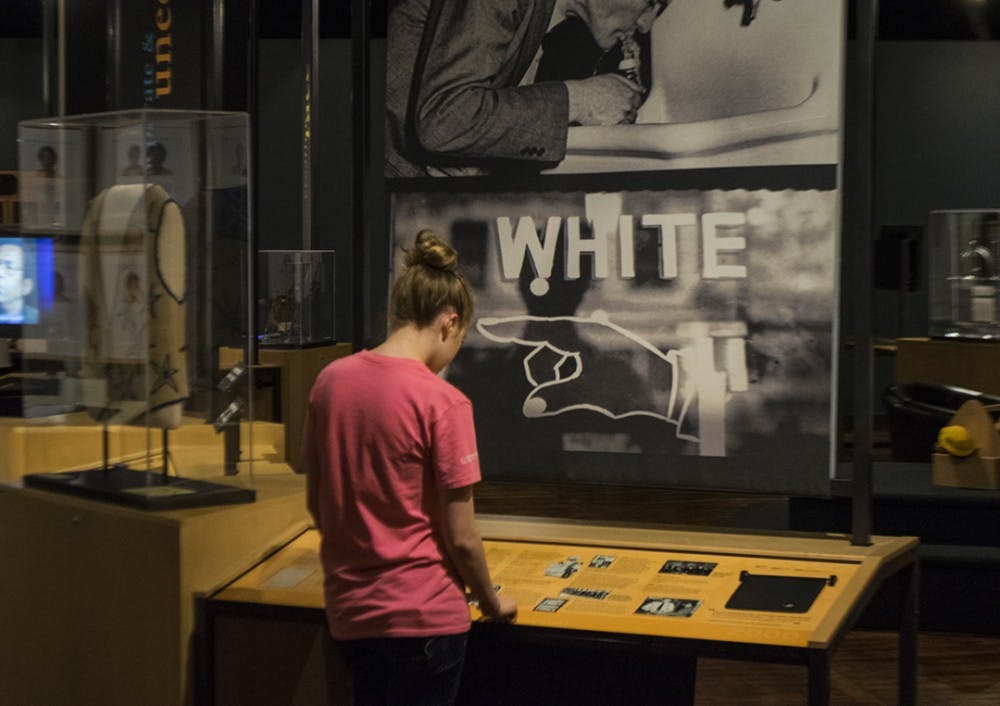It was Sept. 13, 1963, two days after the University of South Carolina was officially desegregated, and The Gamecock, a former iteration of this publication, begrudgingly delivered the news to the people. On the front page The Gamecock staff produced a vague, half-formed story — no longer than 200 words — to depict what would be one of the most monumental events for the university in history. Without ever having mentioned the words "black," or "desegregation," unnamed writer D.W.B. cryptically concluded the piece with, “It’s all quiet, and that’s the big part of the story.”
Back then, race was the reason to keep groups “separate but equal.” Before that, race was the organizing principle in a hierarchy of people. Now, race is a museum exhibit, literally.
Last Saturday, the South Carolina State Museum opened an exhibit entitled “Race: Are We So Different?” According to Jared Glover, public relations manager at the SCSM, the museum had tried to get the exhibit down to Columbia when it was first created in 2007. When racial tensions in the state grew, The Science Museum of Minnesota offered it again for a discounted price. This time, the exhibit seemed to land in the right place at the right time.
Divided into three sections — science, history and everyday experience — “Race” is organized around the view of race as a social construct. The exhibit itself is modest; sparse and dimly lit installments rise from the museum’s wooden floors. This is perhaps because the subject of race does not necessarily call for a loud, showy display. Race is so intensely tied up in one’s understanding of self, it rarely needs explanation.
Scott Trafton, a USC professor who specializes in African-American literature, African-American studies and black cultural studies, has seen exhibits like this one come and go. Although he has not visited the SCSM exhibit yet, Trafton says he notices a troubling pattern in statements like this, in that they only ever scratch the surface of a larger problem.
“The elephant in the room whenever you have a big exhibit or statement or issue revolving around race is, ‘Why are people racist?’ That’s the unspoken question,” Trafton said. “And nobody can come out and say that. The title of the state exhibit should be ‘Racism.’”
Trafton’s point, that racism is the reason race exists, raises a question: Are we ready to put race in a museum, as if it is over and done with, as if it belongs with mummies laid to rest?
At USC, there are quite a few mummies that have yet to be laid to rest, and they can be found in the vastly uneven numbers of minority groups. Black students only comprise 10.2 percent of the population. Black faculty members are even fewer, at 5 percent, according to John Dozier, chief diversity officer in the Office of Diversity and Inclusion.
Trafton, familiar with the complications of faculty politics, noted that one of the many reasons that black faculty members are so few at USC is its reputation, one that nearly any school in the South would not be immune to.
“Convincing somebody to come to a predominantly white school in the deep South in a historically racist state like South Carolina — hiring somebody black to come down here — is hard,” Trafton said. “Convincing them to stay is even harder.”
Dozier, whose office is responsible for maintaining an inclusive and diverse climate at the university, says that a more unified campus can be achieved by fostering ingroup associations among students.
“Most people establish associations, ingroup associations, based on some very basic things. And the things that you see are the most basic of them: Your race, your age, your sex, your ability,” Dozier said. By creating living and learning communities, such as Maxcy College and Preston College, that establish connections beyond the most basic associations, Dozier believes that USC’s student population will offer a more unified front. This, in turn, he says might attract a more diverse faculty.
It is 2016, 53 years after USC's desegregation and zero years after the eradication of racism. At the same time, students, administrators and faculty at the university are constantly working to improve race relations and increase diversity. The museum's exhibit goes past the surface level of the issue and offers the observer a chance to view race and humanity in a different light.

